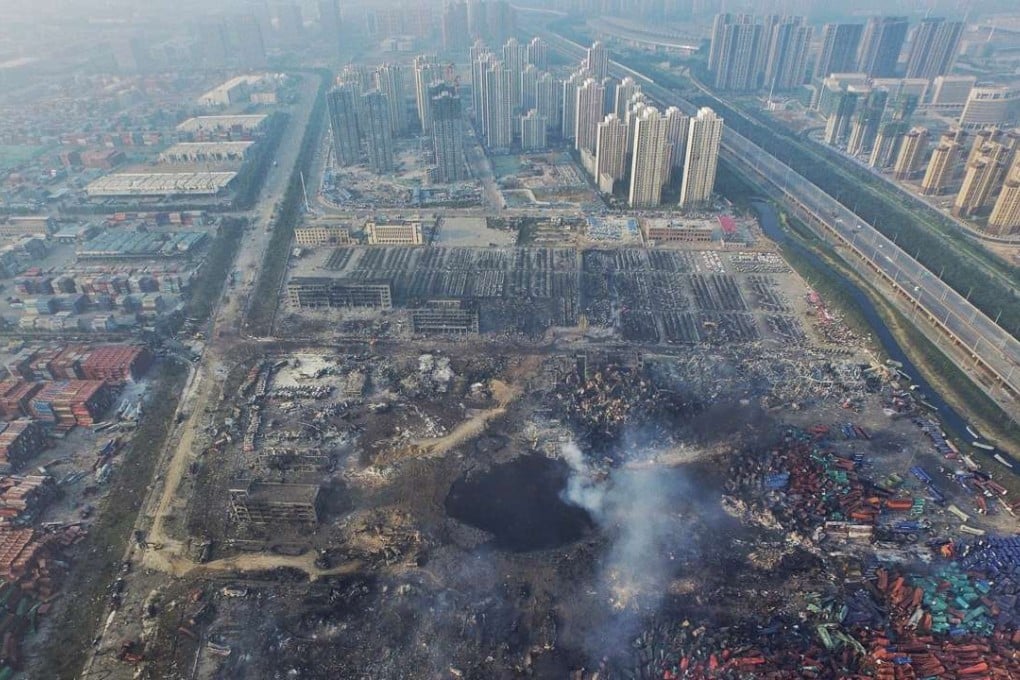Has China failed to learn the lessons of deadly Tianjin explosions?
One year since disaster that claimed 173 lives, restoration work is stalling, government transparency is lacking and a regulation on dangerous chemicals has been abandoned to cut red tape

Seen from afar, the excavators filling two huge pits in an empty swathe of land in the Binhai New Area of Tianjin ( 天津 ) look like toys. It’s easy to imagine they are being driven by surgeons, trying to close a gaping wound on the surface of the earth.
It was here that around midnight on August 12, 2015, a series of blasts at the Ruihai International Logistics chemical warehouse sparked an inferno that claimed 173 lives and injured nearly 800.
Among the dead were 115 firemen and police officers, called to fight one of the worst industrial accidents in China’s history.
Hundreds of tonnes of dangerous chemicals had been illegally stored at the warehouse, helping to create a toxic cocktail that burnt through buildings with ease, leaving deformed shipping containers and melting hundreds of cars as it went.
By the time the last flames were extinguished, thousands of homes had been ruined, many stained with blood.
INFOGRAPHIC: The toxic cocktail in warehouse at centre of fatal Tianjin explosions
